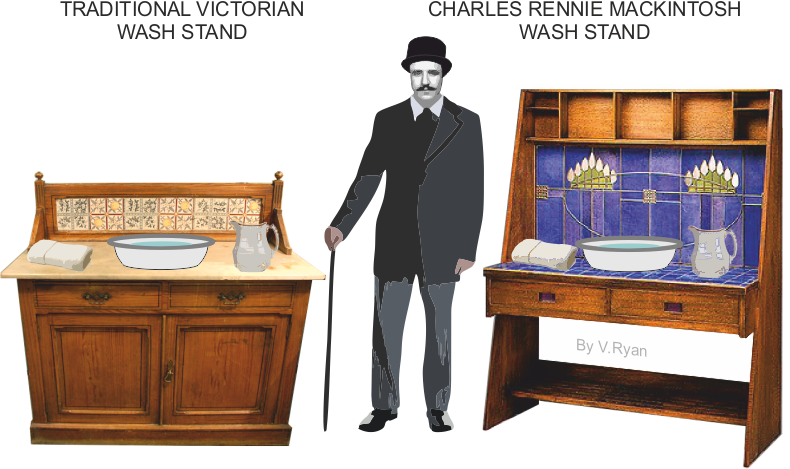| CLICK HERE FOR INDEX PAGE | ||
| PRODUCT COMPARISON | ||
| V. Ryan © 2012 | ||
| PDF FILE - CLICK HERE FOR PRINTABLE WORKSHEET | ||
|
The two wash stands were manufactured in the same year (1904). The Mackintosh wash stand was regarded as unusual, different and modern. Compare both wash stands using the criteria below. |
||
 |
||
|
TRADITIONAL OR MODERN? This wash stand has some interesting traditional features, such as the panelled doors and brass handles. It also a marble top, typical of Victorian times |
TRADITIONAL OR MODERN? This wash basin has some modern features (for 1904). It is quite plain, which is a modernist design characteristic. The tiles were a modern feature, especially as they fit together showing a floral pattern. The shape and form of the natural wood is minimalist. |
|
| USE OF MATERIALS Pine has probably been used to manufacture this wash stand. Traditional skills have been used including lathe work for decoration and a router / plough plain to form grooves. Small traditional tiles decorate the back of the wash stand. |
USE OF MATERIALS Pine has been used to manufacture this wash stand. The floral tiles have been used to waterproof the main surfaces. The lead beading is a bold feature, similar to the way lead beading was used a century ago with window glass. |
|
| AESTHETICS This is a traditional looking wash stand because of the use of the panel doors. The limited decoration adds to a traditional feel. This would still appeal to some potential customers today, if it had modern plumbing. |
AESTHETICS A Modernist piece of furniture (1890-1940), with some typical characteristics. The use of shelves, rather than a cupboard with doors and the angled sides reflects modernism. However, the use of floral tiles still suggests a touch of Art Nouveau (1980s). |
|
 |
 |
|
| CLICK HERE FOR RESISTANT MATERIALS INDEX PAGE | ||
| CLICK HERE FOR PRODUCT DESIGN INDEX PAGE | ||